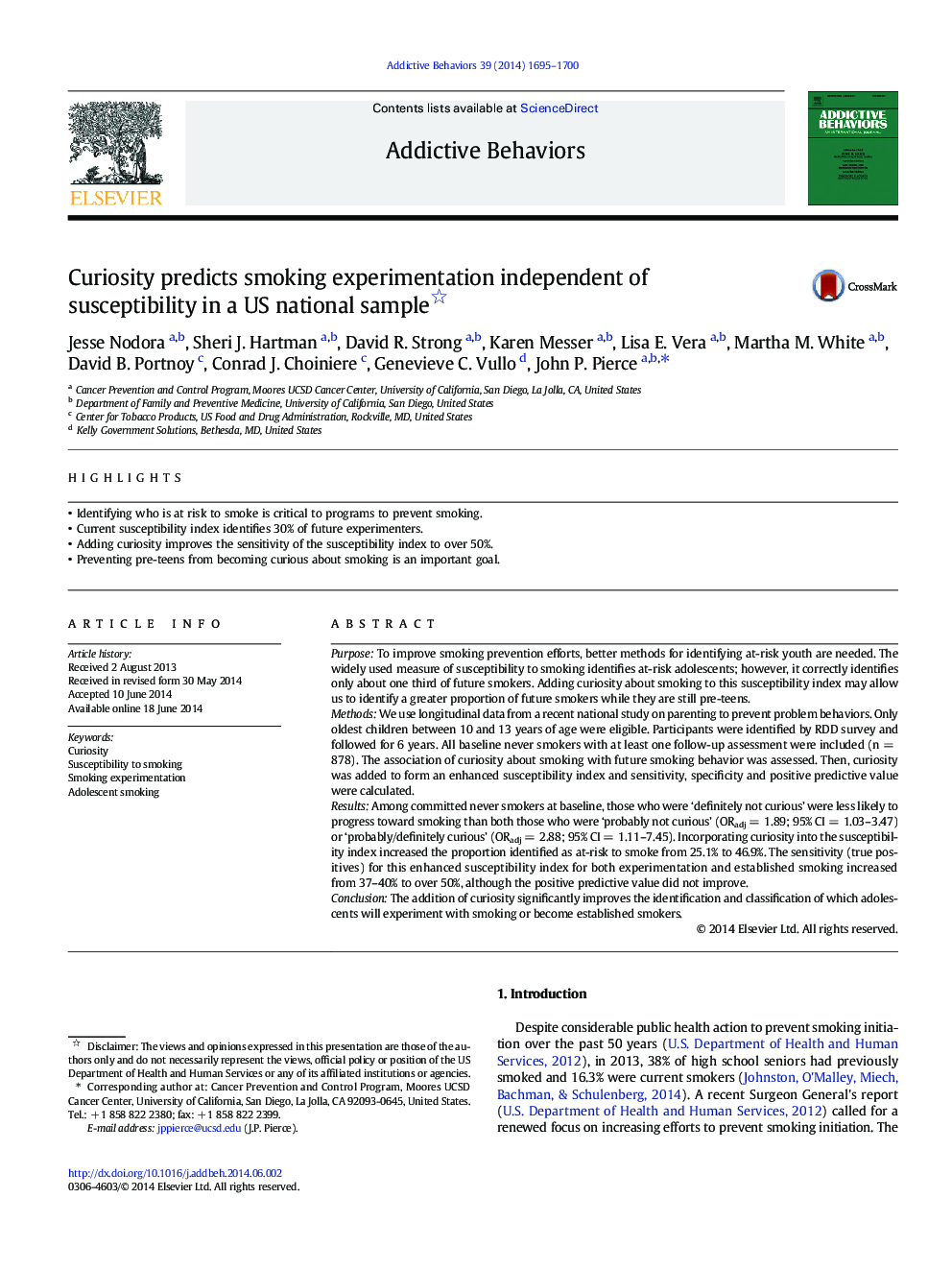| کد مقاله | کد نشریه | سال انتشار | مقاله انگلیسی | نسخه تمام متن |
|---|---|---|---|---|
| 898769 | 915342 | 2014 | 6 صفحه PDF | دانلود رایگان |
• Identifying who is at risk to smoke is critical to programs to prevent smoking.
• Current susceptibility index identifies 30% of future experimenters.
• Adding curiosity improves the sensitivity of the susceptibility index to over 50%.
• Preventing pre-teens from becoming curious about smoking is an important goal.
PurposeTo improve smoking prevention efforts, better methods for identifying at-risk youth are needed. The widely used measure of susceptibility to smoking identifies at-risk adolescents; however, it correctly identifies only about one third of future smokers. Adding curiosity about smoking to this susceptibility index may allow us to identify a greater proportion of future smokers while they are still pre-teens.MethodsWe use longitudinal data from a recent national study on parenting to prevent problem behaviors. Only oldest children between 10 and 13 years of age were eligible. Participants were identified by RDD survey and followed for 6 years. All baseline never smokers with at least one follow-up assessment were included (n = 878). The association of curiosity about smoking with future smoking behavior was assessed. Then, curiosity was added to form an enhanced susceptibility index and sensitivity, specificity and positive predictive value were calculated.ResultsAmong committed never smokers at baseline, those who were ‘definitely not curious’ were less likely to progress toward smoking than both those who were ‘probably not curious’ (ORadj = 1.89; 95% CI = 1.03–3.47) or ‘probably/definitely curious’ (ORadj = 2.88; 95% CI = 1.11–7.45). Incorporating curiosity into the susceptibility index increased the proportion identified as at-risk to smoke from 25.1% to 46.9%. The sensitivity (true positives) for this enhanced susceptibility index for both experimentation and established smoking increased from 37–40% to over 50%, although the positive predictive value did not improve.ConclusionThe addition of curiosity significantly improves the identification and classification of which adolescents will experiment with smoking or become established smokers.
Journal: Addictive Behaviors - Volume 39, Issue 12, December 2014, Pages 1695–1700
